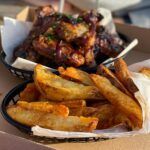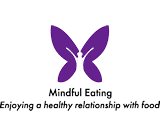 The Difference Between Hunger And Cravings
The Difference Between Hunger And Cravings
When we have the urge to eat, the difference between hunger and cravings isn’t always clear-cut. The mind can do a good job of convincing us that it’s time to eat, and so learning to differentiate between the body’s need for food and a psychological craving (or ‘head hunger’) can be useful to help us know whether or not it’s time to eat. When people overeat, there can be a head/body disconnect, whereby our mindset or emotions run the show, whilst the body gets little say in the matter! This is why it’s important to try and listen to the body and tune into what it needs. This can be hard when we’re surrounded by an environment where attractive, delicious food is cheap and abundant, or when we’re busy, stressed, tired or eating mindlessly or for emotional reasons, but simply pausing and thinking (checking in with yourself) before eating is a good start. If a person eats when they’re not hungry or they continue to eat even though they’re feeling stuffed, they’re ignoring the body’s feedback and acting on a psychological urge or impulse- this might be mindless (subconscious), or deliberate (full awareness) emotional, reward-based eating.
‘Body-Driven’ Vs. ‘Head-Driven’ Cravings
 If you want to eat more in accordance with your body’s needs, it can be helpful to start noticing what your most common eating triggers are. Whereas hunger has an internal basis, such as a rumbling stomach or symptoms of low blood sugar (such as the afternoon ‘slump’ or feeling ‘hangry’), cravings can stem from an internal or external trigger- so they might be caused by the body asking for a specific food or nutrient (a physiological cause), or they might have a psychological cause such as an emotional trigger based on current mood- and our mood can be either self-originated (by our thoughts) or triggered by something in our environment (such as the sight of food, the time, a certain place or situation, or other people eating)- or by both. So internal cues can be ‘body-driven’ (physical) or ‘head-driven’ (psychological), and may trigger a food craving. Common psychological (or emotional) triggers to eat include ‘boredom’ eating, being alone, feeling sad, depressed or anxious, ‘reward’ eating, ‘opportunistic’ eating (‘eating because I can’), ‘anger’ eating and ‘procrastination’ eating (such as walking to the fridge instead of doing a task you don’t feel like doing). The difference between hunger and cravings can be outlined as follows:-
If you want to eat more in accordance with your body’s needs, it can be helpful to start noticing what your most common eating triggers are. Whereas hunger has an internal basis, such as a rumbling stomach or symptoms of low blood sugar (such as the afternoon ‘slump’ or feeling ‘hangry’), cravings can stem from an internal or external trigger- so they might be caused by the body asking for a specific food or nutrient (a physiological cause), or they might have a psychological cause such as an emotional trigger based on current mood- and our mood can be either self-originated (by our thoughts) or triggered by something in our environment (such as the sight of food, the time, a certain place or situation, or other people eating)- or by both. So internal cues can be ‘body-driven’ (physical) or ‘head-driven’ (psychological), and may trigger a food craving. Common psychological (or emotional) triggers to eat include ‘boredom’ eating, being alone, feeling sad, depressed or anxious, ‘reward’ eating, ‘opportunistic’ eating (‘eating because I can’), ‘anger’ eating and ‘procrastination’ eating (such as walking to the fridge instead of doing a task you don’t feel like doing). The difference between hunger and cravings can be outlined as follows:-
Hunger
 Can include any of the following symptoms or sensations: rumbling stomach, feeling nauseous, weakness, irritability (‘hangry’), dizziness, headache, poor concentration, sleepiness, feeling jittery or anxious- ‘body-driven’, ie body is telling you it needs food and blood sugar levels have dropped
Can include any of the following symptoms or sensations: rumbling stomach, feeling nauseous, weakness, irritability (‘hangry’), dizziness, headache, poor concentration, sleepiness, feeling jittery or anxious- ‘body-driven’, ie body is telling you it needs food and blood sugar levels have dropped- Experienced usually after several hours of no food, or if a small or unfulfilling meal or snack has been recently eaten
- It’s satisfied by a meal or snack- symptoms pass after eating
- Involves a desire for a range of foods, not a specific one
- Can come on gradually (no real urgency)
Cravings
- A desire for a specific food, flavour and/or texture
- An urge to eat that can come on suddenly (you have an urge to eat there and then)
 Often ‘head-driven’ (vs. body-driven, as above- though see below about physiological cravings)- motivated by thoughts, feelings, emotions; some people might have cravings occasionally, others might have daily cravings (a fairly constant preoccupation with food)
Often ‘head-driven’ (vs. body-driven, as above- though see below about physiological cravings)- motivated by thoughts, feelings, emotions; some people might have cravings occasionally, others might have daily cravings (a fairly constant preoccupation with food)- Can be the result of habit or circumstance (eg a desire for a specific food that’s usually eaten at a certain time and place)
- Can be caused by external factors, eg the sight or smell of food, situational cues (such as in a certain place/context, with certain people) or by internal factors (eg mood or mindset, such as negative/positive thoughts or feelings)
- There may be no clear trigger, ie more of a subconscious drive/urge– usually a deeper emotional component involved
- Can occur after restricting or avoiding particular foods for a period of time (eg dieting)
- Can occur even if recently eaten (ie the craving might persist because a particular food didn’t satisfy the craving)
- A craving may have a physiological basis, eg the body may be in need of glucose or lacking certain nutrients and this can lead to cravings for a particular nutritious food, or a drop in blood sugar levels might prompt an urge for a sugary or starchy food (for a quick source of glucose); it may occur during pregnancy or when pre-menstrual (ie hormonal), during a period of intense fitness training, during or post illness or due to certain medications.
Read more about my webinar ‘How To Stop Binge Eating For Good’.
Identify Your Eating Triggers & Label The Types Of Eating You Do
Having a clear idea of the difference between hunger and cravings can be really useful if you want to improve your relationship with food and reduce the frequency of ‘non-hunger’ eating. If you often find yourself eating when you’re not actually hungry, writing down your eating triggers can be helpful. A good exercise to try is “I’m eating this because…….”, and complete the sentence. Try to label the types of eating you do (see examples given above). Which tend to occur the most often for you? If you experience low mood or you describe yourself as an emotional or comfort eater, then dealing with the underlying cause of your urges to eat and reliance on food to cope needs to be addressed to help you tackle food cravings. If you’re regularly hungry, then take a look at the foods you tend to eat- perhaps they’re not keeping you full for long and causing hunger or cravings for specific foods.
If You Don’t Experience Hunger
Some people don’t experience hunger- they might have lost touch with what it feels to be hungry. They don’t remember the last time their stomach rumbled. This might be due to long-term dieting or restrictive eating, if they spent years eating according to diet rules or severely restricting food, ignoring rather than responding to hunger cues. Reduced hunger or lack of appetite can be due to certain health conditions, certain medications and ageing. Some individuals are fearful of hunger, and eat so frequently throughout the day that they don’t give themselves a chance to get hungry. If an individual doesn’t experience physical hunger, then learning to separate hunger (the body’s need for food) from psychological hunger (a craving) can be really useful. Creating gaps between eating (such as eating no more than five or six times per day) in order to give the body chance to provide feedback, can help you to start tuning into bodily sensations of hunger because food intake has become less frequent. Learning to notice the difference between body-driven and mind-driven urges to eat can help to clarify when it’s a good time to eat and when food isn’t required, rather than just automatically responding to an urge to eat with food without assessing first. Deeper therapeutic exploration may be required if a person is finding they are regularly preoccupied with food and overeating (or binge eating). Find out more about my one-to-one sessions. Once we can tune into true hunger, a craving will start to feel distinctly different to actual hunger, and this can be very empowering.
Build Self-Insight
The key to change is building self-awareness and self-understanding. Rather than beating ourselves up for eating when we’re not hungry, developing self-understanding can help us to approach overeating or ‘pointless’ eating in a self-compassionate way. Getting angry and frustrated at ourselves is unhelpful; only when we start being kind to ourselves can we start making positive, effective, long-lasting changes. We also need to be realistic- there will always be times (for example, if socialising) when we eat when we’re not hungry- and that’s ok. If you feel overly preoccupied with food and experience frequent urges to eat, try to adopt compassionate curiosity, be patient, and see what you discover- once you begin to see the difference between hunger and cravings you can start creating empowering strategies to tackle your urges to eat.
My Services
One-to-Ones: SPECIAL OFFER: buy three sessions up front and get a 4th session HALF PRICE (£30). Contact me via email HERE.
Webinar: ‘How To Stop Binge Eating For Good’.
Fortnightly support group (online): More information can be found HERE.
Click HERE to see the events schedule and to purchase tickets for any of my events via Eventbrite.
Follow me on Instagram.
For further tips, information and advice see my other blogs.
If you feel you could benefit from my services and would like to have a chat, give me a call (Emma Randall) on 07961 423120, or email me: info@mindfuleating.org.uk

